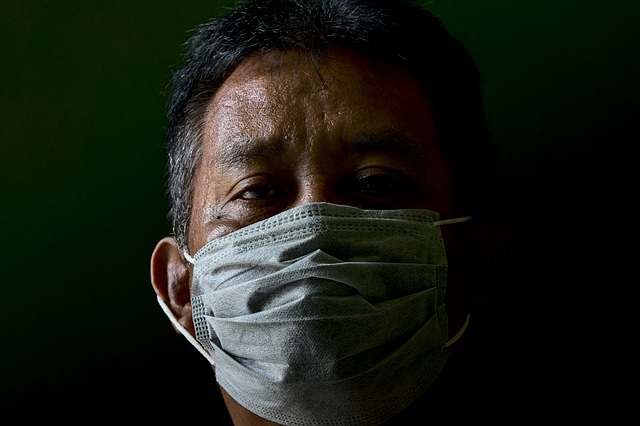
Whooping cough, also known as pertussis, is a highly contagious bacterial infection of the respiratory system caused by the bacterium Bordetella pertussis. Despite widespread vaccination efforts, whooping cough continues to pose a significant health threat worldwide, particularly to infants and vulnerable populations. In recent years, there have been periodic outbreaks, highlighting the importance of understanding this disease. In this detailed guide, we’ll explore everything you need to know about whooping cough, including its symptoms, causes, treatment, prevention strategies, and impact on public health.
What is Whooping Cough?
Whooping cough is characterized by severe coughing fits, which can make breathing difficult and lead to the distinctive “whooping” sound when the infected individual tries to inhale after coughing. It primarily affects infants and young children but can also infect older children, teenagers, and adults. The disease can be severe, especially in infants, and in some cases, it can lead to life-threatening complications such as pneumonia or brain damage.
Symptoms of Whooping Cough
Whooping cough typically progresses in three stages, and symptoms can vary depending on the stage of infection.
- Catarrhal Stage (1 to 2 weeks):
This early stage mimics the symptoms of the common cold, making it difficult to diagnose. Symptoms include:- Runny nose
- Mild cough
- Low-grade fever
- Sneezing
- Fatigue
During this stage, the infection is most contagious, but since the symptoms are mild, many individuals may not realize they are infected.
- Paroxysmal Stage (1 to 6 weeks):
This stage is marked by intense coughing spells that can last for weeks or even months. The hallmark symptom of this stage is the whooping cough sound, caused by the desperate inhalation after a coughing fit. Other symptoms include:- Severe coughing fits that last for several minutes
- Vomiting after coughing
- Red or blue face due to lack of oxygen during coughing
- Exhaustion after coughing fits
These episodes are more frequent at night and can be so severe that they disrupt sleep, eating, and daily activities. Infants may have periods of apnea (pauses in breathing), which can be life-threatening.
- Convalescent Stage (2 to 3 weeks):
In this recovery phase, coughing fits become less frequent and severe, but the overall healing process can take several weeks. The risk of secondary infections, such as pneumonia, is still present during this stage.
Causes and Transmission
Whooping cough is caused by the bacterium Bordetella pertussis. The infection spreads through respiratory droplets when an infected person coughs, sneezes, or talks. Close contact with infected individuals, especially in settings like households, schools, and healthcare facilities, increases the risk of transmission.
According to the Centers for Disease Control and Prevention (CDC), unvaccinated or under-vaccinated children are at the highest risk of contracting and spreading the infection. Adults with waning immunity from previous vaccinations can also become carriers and unknowingly spread the disease to vulnerable populations, particularly infants who are too young to be fully vaccinated.
Risk Factors
- Infants under 6 months: Babies who are too young to have received the full series of pertussis vaccines are at the highest risk of severe complications, including death.
- Unvaccinated children and adults: Those who have not received the full vaccination series or who have not had booster shots are at increased risk.
- Adults with waning immunity: Even individuals who were vaccinated as children can become susceptible again as immunity decreases over time.
- Pregnant women: Pregnant women who contract whooping cough can pass the infection to their newborns, leading to serious complications.
Diagnosis
Diagnosing whooping cough can be challenging, particularly in the early stages when symptoms resemble the common cold. Medical professionals typically rely on a combination of clinical symptoms and laboratory tests to confirm the diagnosis. Diagnostic methods include:
- Nasal swab: A sample is collected from the nose or throat and tested for the presence of Bordetella pertussis.
- Blood tests: In some cases, blood tests may be used to check for antibodies against the bacterium.
- Chest X-ray: If pneumonia is suspected as a complication, a chest X-ray may be performed to assess lung health.
Complications
Whooping cough can cause serious and even life-threatening complications, especially in infants and young children. According to the World Health Organization (WHO), approximately 100,000 to 150,000 deaths occur worldwide each year due to whooping cough, with the majority of fatalities happening in developing countries where vaccination rates are lower.
Some of the most common complications include:
- Pneumonia: A common secondary infection in infants, potentially leading to severe respiratory distress.
- Apnea: Infants may experience pauses in breathing, which can result in oxygen deprivation and brain damage.
- Seizures: Severe coughing fits may trigger seizures in infants and young children.
- Weight loss and dehydration: Repeated vomiting after coughing can lead to significant weight loss and dehydration.
Treatment
Once diagnosed, treatment for whooping cough focuses on reducing symptoms, preventing the spread of the disease, and minimizing the risk of complications. Treatment options include:
- Antibiotics:
Antibiotics such as azithromycin or erythromycin are commonly prescribed to kill the Bordetella pertussis bacteria. Early antibiotic treatment is crucial, as it can reduce the severity of symptoms and help prevent the spread of the disease. However, antibiotics are less effective once the coughing fits have begun in the paroxysmal stage. - Hospitalization:
Severe cases, especially in infants, may require hospitalization. In the hospital, patients may receive:- Oxygen therapy to aid breathing
- Intravenous fluids to prevent dehydration
- Monitoring for apnea or other life-threatening complications
- Home Care:
For less severe cases, home care can involve:- Keeping the patient well-hydrated
- Creating a calm, quiet environment to reduce the frequency of coughing fits
- Using a humidifier to soothe irritated airways
Prevention
The most effective way to prevent whooping cough is through vaccination. The DTaP vaccine (diphtheria, tetanus, and acellular pertussis) is given to infants and young children in a series of doses. The Tdap vaccine is a booster shot recommended for older children, teenagers, and adults, especially those in close contact with infants.
Vaccination Schedule:
- DTaP: Given at 2, 4, 6, and 15-18 months, with a booster at 4-6 years of age.
- Tdap: Recommended for adolescents at 11-12 years old, pregnant women in each pregnancy (between 27 and 36 weeks), and adults who have not previously received it.
Whooping Cough in Numbers
- According to the CDC, approximately 24.1 million cases of whooping cough occur globally each year.
- In the U.S., whooping cough cases have seen periodic outbreaks, with 15,609 reported cases in 2018 alone.
- Vaccination efforts have reduced global whooping cough deaths by 91% since the introduction of the vaccine in the 1940s, according to the WHO.
Conclusion
Whooping cough is a serious, highly contagious disease that poses a significant risk to infants, children, and adults with waning immunity. Despite the availability of effective vaccines, periodic outbreaks continue to occur, underscoring the importance of vaccination, early diagnosis, and appropriate treatment. By understanding the symptoms, causes, and preventive measures associated with whooping cough, individuals can take proactive steps to protect themselves and their communities from this dangerous disease.
References
- Centers for Disease Control and Prevention (CDC). (2020). “Pertussis (Whooping Cough).”
- World Health Organization (WHO). (2020). “Pertussis Fact Sheet.”
- American Academy of Pediatrics. (2019). “Immunization Schedule for DTaP and Tdap.”
- Cherry, J. D., & Heininger, U. (2018). “Pertussis and its Prevention: A Global Perspective.” The Lancet Infectious Diseases.

